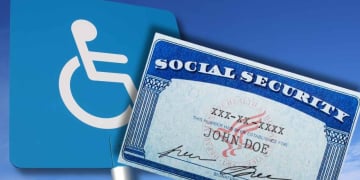The Supplemental Security Income (SSI) program is a federal initiative in the U.S. that provides monthly financial assistance to people with limited income and resources. It supports seniors over 65, individuals with disabilities or blindness, and children with disabilities. Eligibility depends on specific income, resource, and residency requirements.
In most states, SSI beneficiaries automatically qualify for Medicaid, ensuring access to essential healthcare. Monthly payments typically go out on the first of each month. But if that date falls on a weekend or federal holiday, the payment drops early—on the last business day before.
2025 payment calendar changes: Why you’ll have no payment in June
Due to scheduling tweaks in 2025, some months will have two SSI payments, while others will have none. This isn’t extra cash—just a shift to keep things on track when paydays land on non-business days. The money still covers the same monthly periods.
The months with double SSI payouts in 2025 are:
-
May: Payments on the 1st and 30th (the second one’s actually June’s payment).
-
August: Payments on the 1st and 29th (the 29th is September’s check).
-
October: Payments on the 1st and 31st (the 31st covers November).
-
December: Payments on the 1st and 31st (the 31st is for January 2026)
That means these months won’t have an SSI payment in 2025:
-
June: Already paid on May 30.
-
September: Already paid on August 29.
-
November: Already paid on October 31.
-
January 2026: Already paid on December 31, 2025.
Maximum amounts for Supplemental Security Income recipients
Starting January 2025, and going all the way through December, the maximum federal SSI payments will be the next ones:
-
Eligible individual: $967
-
Eligible couple: $1,450
-
Essential person: $484
Now, not everyone will get the maximum payment. Your actual deposit can shrink based on other income or resources you have. Some states throw in extra cash (state supplements), which can bump up your total.
Who Can Get Both SSI and Retirement Benefits?
If you’re getting Social Security retirement checks, you might still qualify for SSI—but only if your income and savings are super low. For example, in 2025, you could get SSI if your total monthly income (including retirement benefits) stays under $987. Yeah, it’s tight, but for some folks, every bit helps.
Basic rules to get both retirement+SSI
Income Limits: Your monthly cash flow has to be low. Exact numbers change, but generally, if Social Security sees your income creeping too high, SSI’s off the table.
Savings Cap: You can’t have more than $2,000 (single) or $3,000 (couples) in assets. That means cash, bank accounts, extra property—basically anything they can count. But don’t sweat your house or one car—those usually don’t count.
Age or Disability: You gotta be 65+, blind, or disabled (and meet SSA’s strict rules on what counts as disabled).
Citizenship Status: You need to be a U.S. citizen or fall into specific immigrant categories (like refugees or asylum seekers).
Automatic Check: When you apply for SSI, Social Security automatically checks if you qualify for other benefits too. No extra paperwork needed.
If you do get both, your SSI payment might shrink based on your retirement check amount. But hey, even a small extra boost can make a difference when money’s tight. If you could be getting retirement benefits but haven’t applied yet, Social Security might make you file first, which could lower your SSI. So, no skipping steps!




